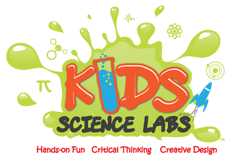If you are like me, you often wonder what you can do to get better sleep. It's crazy, but every other day, my favorite pillow seems to disappear to the other side of the bed. I awoke this am wondering...why do some pillows seem to work so well for allowing me to relax, while others just feel like I'm laying down while someone is jumpkicking me in the back of the head. Well, I thought, a pillow is science.
So let's talk about it. The science is universal for our kids in that they should have a firm mattress and firm pillows to build strong back and neck support and more importantly when they are small, help avoid suffocation. Adults on the other hand, enjoy a wide range of pillows based on our own sleep position and personal preferences. It is however believed that a pillow should be 4-6 inches in height for optimal neck support.
A pillow is typically described or rated as being soft, medium or firm. The "firmness" is typically related to three factors: amount of fill, type of fill, and type of pillowcase being used. Believe it or not, but this is ALL SCIENCE. Scientists explore material selection in just about every product that is made and a pillow is no different, except that there are significant differences in the preferences of consumers. Whether you enjoy soft pillows like me, or more firm pillows to reach your most relaxing state at night, you can investigate which pillow is right for you and have fun discussing the concept of ELASTICITY with your kids, because a pillow is just a cushion by another name.
Pillows have ELASTICITY, which is a science word that describes a materials ability to return to its original state after being streteched or bent. Firm pillows have a lot of elasticity, as they quickly return to their original state after you move your heead. Soft pillows have a lower degree of elasticity, but a high degree of IMPULSE, which is a science word that describes a materials abiity to absorb impact (like that of your head).
But you are reading this because love my writing, so what is the science experiment at home with my kids. The fact is that your head weighs between 8 and 10 lbs, and has significant variation in contour from neck to hairstyle. A pillow, one of the engineering marvels, must be able to absorb the impact of our brain (IMPULSE) and not get too deformed (ELASTICITY) so in the morning it still looks like a pillow. At home, lay two pillows, with different characteristics, side by side. Grab a large coconut, pot, or other spherical object, and lay them on the ground. With your kids doing the testing, drop the objects onto the pillow from a low height (1 inch), medium height (5 inches) and high height (10 inches) and observe what happens when they hit the pillow. If your child is 6+, you can even get them to record the results in a table, which helps practice their math and writing skills. Discuss what happens and use the two new science words we introduced today: ELASTICITY and IMPULSE.
My 7yr old loves to talk about pillows and understands more about her own sleep preferences as a result of this experiment. In my next post, I will discuss the materials used for pillows from those in late night infomercials and how you can make your own pillows at home with your kids.






























